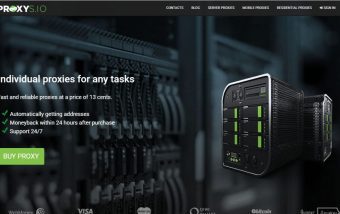AI SEO: Why It Matters & How To Rank On AI Overviews?
Dec 17, 2025

Dec 17, 2025

Dec 16, 2025

Dec 15, 2025

Dec 15, 2025

Dec 15, 2025

Dec 13, 2025

Dec 12, 2025

Dec 12, 2025
Sorry, but nothing matched your search "". Please try again with some different keywords.


Running a third-party logistics (3PL) business? Then you already know it’s not for the faint of heart.
Moreover, between keeping inventory in check, juggling multiple clients, and making sure billing doesn’t turn into a nightmare, there’s a lot on your plate.
Also, if your current system feels like it belongs in another decade—well, you’re definitely not the only one.
Plenty of providers are stuck with outdated tools that waste time and money. So, that’s where a modern 3PL Warehouse Management System comes in.
Moreover, WMS for 3PL providers by Shiphero is designed to take the headache out of logistics with real-time tracking, automation, and multi-client management features.
Here’s the thing: today’s WMS platforms aren’t just about keeping tabs on your warehouse—they help you work smarter. Automation? Check. Instant insights? Check. Less stress? Absolutely.
So, what should you look for in a system? Let’s break it down.
Old-school systems? They slow you down. So, in a business where every minute counts, that’s a dealbreaker.
However, a modern WMS gives 3PL providers the speed and efficiency they need to keep up with client demands—and, trust me, those demands aren’t getting any lighter.
Moreover, these aren’t nice-to-haves anymore; they’re expected.
Additionally, automation is another big win. It reduces manual errors (goodbye, endless billing corrections), and analytics tools help you see what’s working—and what’s not—across different locations.
So, basically, a modern 3PL warehouse management system doesn’t just make life easier; it keeps your business competitive.
If you’re looking for a 3PL warehouse management system, these are the key features you should focus on.
Imagine knowing exactly what’s in your warehouse the moment you need that info. That’s the beauty of real-time tracking.
Moreover, it keeps you from overselling or running out of stock, and makes your customers happy.
From receiving to shipping, a solid WMS keeps everything visible at every step. Moreover, less room for misplaced products, fewer shipping delays, and better control over your supply chain.
Let’s be real—billing is a headache. So, an automated WMS makes it painless. Moreover, it tracks every billable activity—storage, packing, special handling—so nothing slips through the cracks.
One warehouse manager I spoke to said, “Accuracy here means saving time, money, and trust.” Couldn’t agree more.
Moreover, the system can even set different rates for different clients automatically, which frees your team to focus on what really matters.
Data isn’t just numbers—it’s insight. Modern WMS platforms give you analytics that make sense:
Moreover, the entire data is provided in a visually appealing manner. So, you can visualize the issues and take informed decisions regarding them.
If you want to know how fast your team is fulfilling orders? Or how accurate your picks are? Moreover, these systems give you that info at a glance, helping you cut costs and prep for demand spikes.
A great WMS doesn’t operate in isolation. It talks to your ERP, your transportation software, your order management platform—basically, all the tools that keep your operations humming.
Moreover, this isn’t just about convenience. Integrations mean no duplicate data entry (or miscommunication), faster workflows, and more consistent results across the board.
Handling multiple clients? It can get messy. But a good WMS keeps it all separate and organized with clear client dashboards. No more mixing up orders or inventory.
Moreover, it even lets you customize workflows for each client. One might need custom packaging, another faster fulfillment.
Additionally, a flexible WMS can handle it all without turning your warehouse upside down.
Even the most powerful system is useless if your team hates using it. So, a clean, easy-to-navigate interface is non-negotiable.
Moreover, dashboards should display what really matters—inventory levels, order statuses, shipping updates—without the clutter.
Also, the easier it is to use, the quicker your team adapts, which means less downtime and fewer mistakes.
So, if you are wondering how having a 3PL warehouse management system is helpful, you need to know about its benefits. Some of them include:
Peak season? No problem. A modern WMS helps you assign tasks based on employee strengths and distribute workloads efficiently.
Also, add in automation tools like pick-to-light systems, and suddenly you’re reducing mistakes and speeding up fulfillment.
Say goodbye to stockouts and overstocking. With barcode scanning, RFID, and cloud-based updates, your inventory stays accurate everywhere—whether you’ve got one warehouse or ten.
Moreover, sharing this data with clients builds trust and makes collaboration easier.
Returns are costly, period. By automating shipping verification (correct item, address, and quantity), you can drastically cut those errors. Moreover, fewer returns, lower costs, and happier customers.
Slow inbound processes can choke everything else. Additionally, a WMS speeds it up with automated data capture and real-time updates so goods move from dock to shelf faster.
Moreover, it also prioritizes unloading and organizes items by storage zones, saving time and space.
Growth is great… until your systems can’t keep up. So, a modern WMS scales with you, handling more clients, more orders, and more warehouses without breaking a sweat.
Moreover, automation and integrations help keep everything running smoothly, even when demand spikes.
Cloud-based WMS? Perfect if you need flexibility and a quick setup. Moreover, it runs over the internet, so no giant upfront investment in servers, and updates happen automatically.
On-premise? So, that’s for businesses needing more control over data and configurations. Moreover, it’s pricier and requires more upkeep, but it works well if you’ve got strict security or compliance needs.
Choosing a WMS isn’t just picking software—it’s picking a growth partner. So, ask the tough questions:
Moreover, these answers will tell you whether the system is truly built for your business or just another shiny tool.
Before you pull the trigger, check:
Don’t rush it. Test every feature before going live.
Moreover, involve your team early—nothing slows things down like frustrated employees who weren’t part of the conversation.
A fancy system means nothing if your team doesn’t know how to use it.
Moreover, start with hands-on training. Break it into manageable chunks. Maybe offer cheat sheets. And, most importantly, encourage questions—lots of them.
Also, customized, role-based training works best. Follow it up with ongoing support as they get used to new workflows.
At the end of the day, a modern WMS isn’t just a tool—it’s a game-changer. It simplifies, streamlines, and sets you up for growth.
So, pick a system that solves your real problems and actually fits how you work. Because in logistics, staying ahead isn’t optional—it’s survival.
Barsha is a seasoned digital marketing writer with a focus on SEO, content marketing, and conversion-driven copy. With 7 years of experience in crafting high-performing content for startups, agencies, and established brands, Barsha brings strategic insight and storytelling together to drive online growth. When not writing, Barsha spends time obsessing over conspiracy theories, the latest Google algorithm changes, and content trends.
View all Posts

